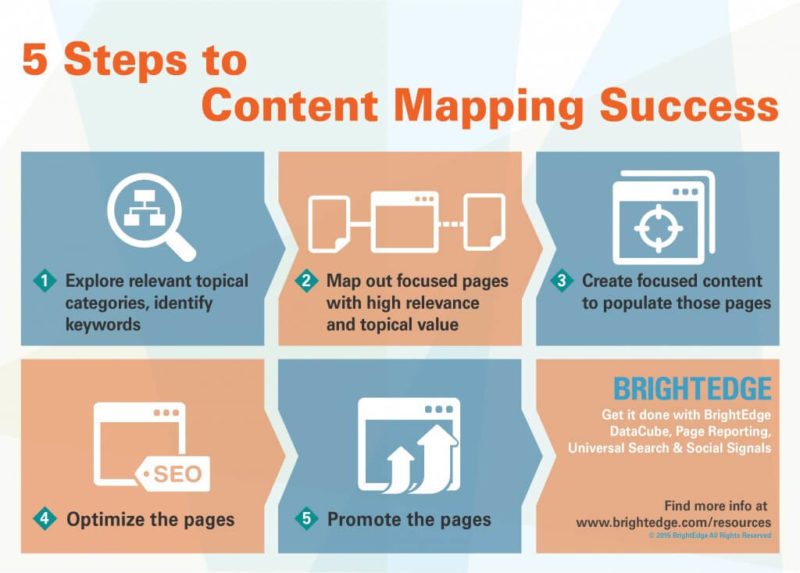Map the buyer journeys associated with each of your personas, outlining what they will be looking for during each stage. Identify keywords that they will likely use along the way and the types of content that they will likely be seeking.
For example:
Awareness Stage: During the awareness stage, people will be asking broad questions about the industry and their problem. Keywords might reference issues they are having or how to improve or optimize. They will respond best to content such as:
- Blog posts and articles.
- Visuals such as infographics and viral videos.
- Podcasts.
Consideration And Evaluation Stage: As people move into these stages, you are going to see more specific queries. They are going to want to learn about the company and products specifically. Keywords might reference your brand name, the type of technology or the service being performed. The best types of content will often include:
- Webinars.
- Ebooks.
- Case studies.
- Product demonstrations.
- White papers.
- Reports.
Purchase Stage: In this stage, people are going to be very focused with their queries. They are going to make searches about the pros and cons of your business or product. They might also use “versus” to compare your brand to a competitor. They will respond best to content such as:
- Free trials.
- Consultations.
- How-to videos.
- Tutorials.
Post-Purchase Stage: Once customers have made their purchase, it is important to keep them engaged. Keywords will likely focus around getting the most out of your product or service or questions about how to optimize the experience. Your content might look like:
- Newsletters to keep customers engaged.
- Triggered emails at certain points after the purchase, such as before a renewal.
- Blog posts.
- Videos.
Take your topics and keywords, your outline of your buyer’s journey and your types of content and piece them together. Look for gaps along the path, and create the content needed to fill them. Create all future content with a purpose to fill a role along the buyer’s journey.
Optimizing Search And Social
There is more to optimizing for the user experience than just mapping your content on your website to the buyer’s journey, however. It also requires taking a holistic look at your consumers.
The average B2B researcher will conduct 12 searches before engaging on your brand website. During these searches, they look for information from third parties, prior customers and other sources of insight outside of your brand properties.
It is also important to note that 74 percent of US customers shop on more than one channel. People are largely channel-agnostic, and they want to see a strong customer-oriented experience across every platform where they interact with you and learn about you.
This means you need to focus on optimizing the entire user experience. You need a consistent understanding of the funnel and the same touch points, regardless of where people interact with you. Do not think of optimization as something that is channel-specific (i.e., something that only needs to be done on your main website). Instead, think of it as creating an outstanding customer experience that touches upon all the channels the prospect might visit.

Achieving this means bringing your whole marketing team together, regardless of specialty. Your social media, PR and search teams all need to work together to understand how their roles play into the customer journey. Enticing pictures on Instagram or Pinterest, viral videos on YouTube, engaging content on Google+ and a strong reputation through a great PR team can all help bring customers to your site.
Distributing your content through social media, particularly the content geared towards the first two stages of the funnel, can also help your material gain traffic and attention.
Following the above process will help to further boost it in the SERPs, attracting more prospects to your brand and encouraging them to move through the purchase funnel.
Understanding how your content impacts this buyer’s journey can help you influence your future sales and strengthen your reputation. Put the customer experience first, and see how it can help you improve your reputation and grow your business in the form of customer engagement, conversion and revenue.
Content Mapping, Search Optimization And The Buyer’s Journey
